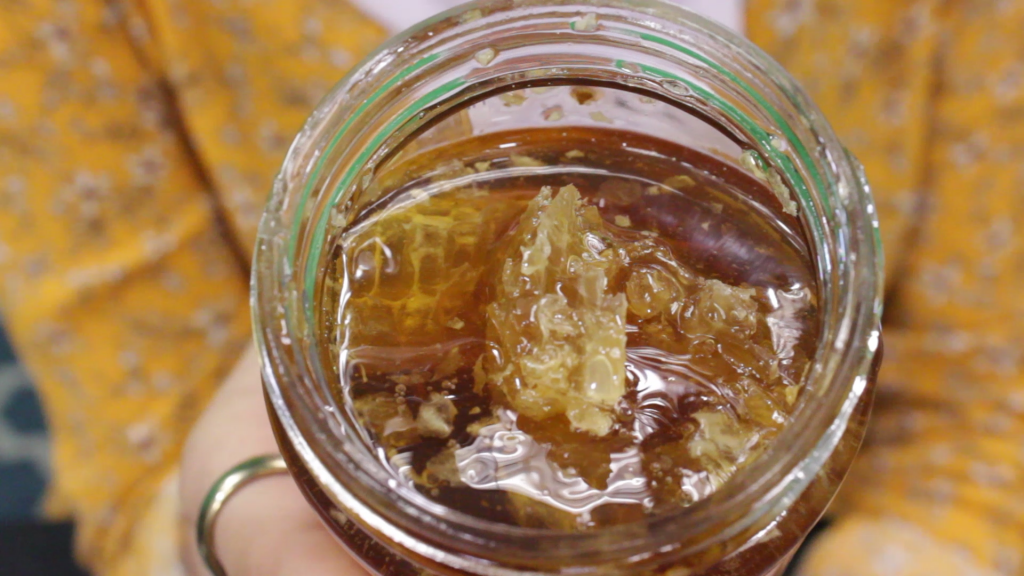Besides sugar, honey is perhaps the most familiar sweetener we know and love. And most of us also probably know that honeycomb (and the honey that comes with it) is produced by bees. But what are the details of the process, and how is UTD involved? To answer these questions, my friend and fellow editor Emaan Bangash and I donned beekeeping suits and ventured right into the heart of local bee-dom: the UTD apiary.
Joining us at the gate to the bee enclosure were senior UTD lecturers Scott Rippel and Christina Thompson. Rippel said since starting the apiary in 2013, he’s enjoyed working with students just as much as working with bees. Emaan and I join many others who’ve zipped up the canvas jackets, put on the honey and resin-encrusted gloves and met the bees up close and personal.
After putting on our suits and Velcroing our veils to keep the bees away from our faces, we entered the main enclosure while Rippel removed the cover from one of the hives. Despite the ominous buzzing that had Emaan and me swatting the air, Rippel seemed unperturbed as he brought his gloveless hands close to the box. As he approached the insects with a bee smoker, he explained that the smoke helps obscure the pheromones bees use to communicate, keeping them docile and unaggressive.
As Rippel removed a rectangular plank covered in honeycomb, he pointed out the varying colors. Darker spots were where the honeycomb had been reused many times by the bees as they reared their larvae. The rich, amber portions were where the honey was stored.

To make the honeycomb, bees secrete small flakes of wax from their wax glands, chew it and build it into an intricate hexagonal structure. Some of the honeycomb was “capped” with beeswax to seal the hexagon. When the bees finish fanning the nectar they collect, it turns into viscous honey, and is then covered in a thin layer of wax. Drawing his fingernail across the top of several caps of wax, Rippel pointed out how the bees immediately swarmed the honey. At first, holding the slab of honeycomb covered in bees almost felt like something out of a horror film. After becoming accustomed to it, though, it was fascinating to watch the bees move in and out of their honeycomb home.
Now thoroughly acquainted with our newfound buzzing friends, Emaan and I bid them adieu and went to taste the fruit of their labor at the studio: the honeycomb itself. Never having tried it before, I anticipated the wax/honey combination to be more unpleasant than it was. The sweetness of the honey — combined with the crumbly-chocolate texture of the comb — reminded me of the initial burst of flavor when chewing sugary gum. Similarly — again, not unlike gum — the flavor faded rapidly, and I was left with a mouthful of bland wax. This was possibly the only unenjoyable part of the experience—so be sure to have a trash can or napkin handy to (discreetly) dispose of your leftover comb.
As you strike out on your own eating adventures, consider incorporating honeycomb onto your bucket list. It’s not everyday you can say you ate something’s house!
This is Emaan, Maddie, Marco, Chiamaka and Ryan (our camera guy) thanking you for joining us for this last segment of “Whatcha Eatin’?” We wish you the best on your culinary endeavors!
Leave a Reply